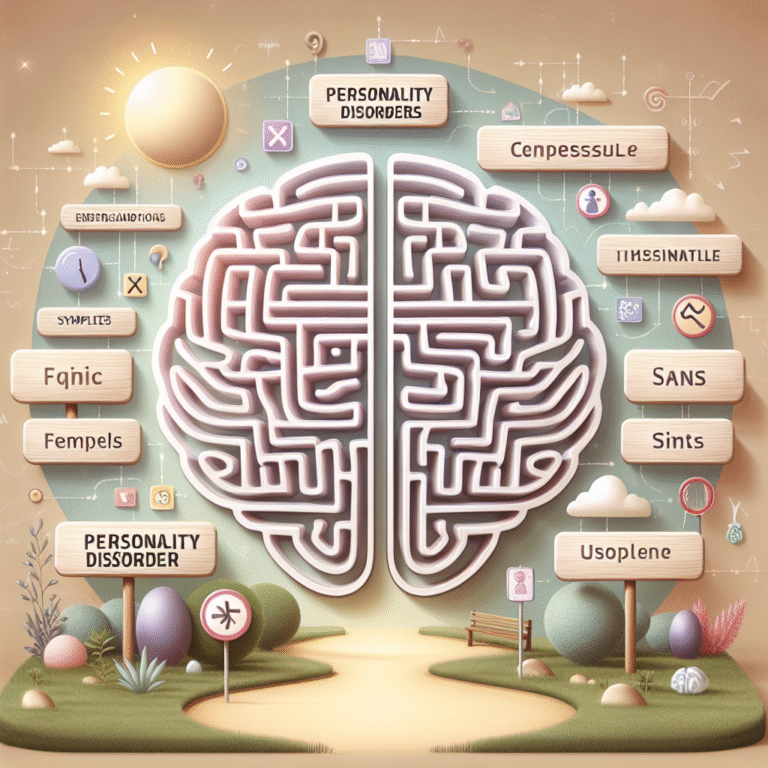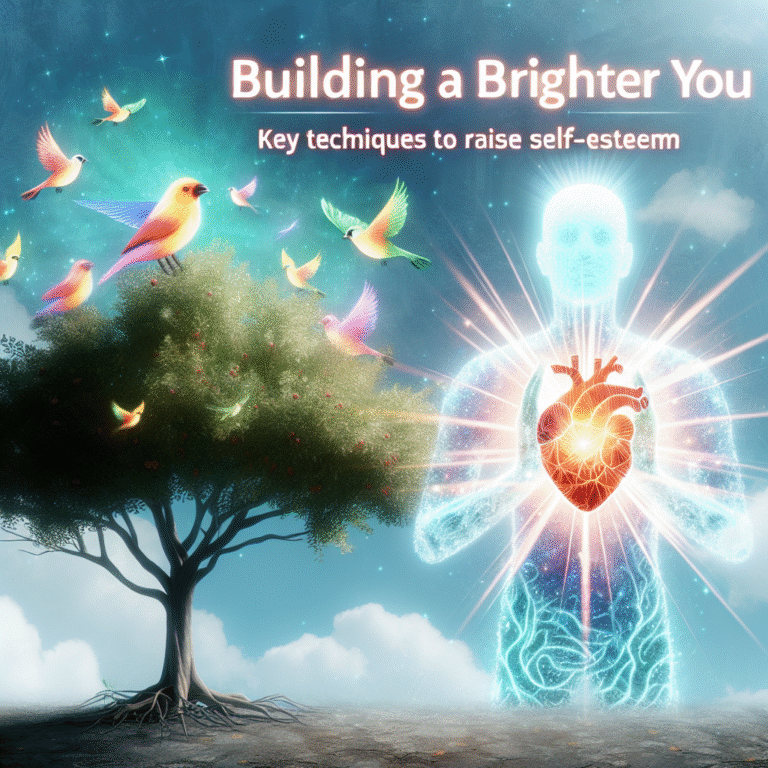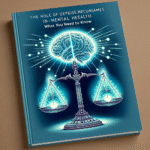Emotional Regulation Made Easy: Quick Tips for Everyday Life
Introduction
In a world where stress is the norm and emotional turbulence can derail our lives, mastering emotional regulation is not just beneficial—it’s essential. Whether you’re facing the daily grind of work, navigating complex relationships, or tackling unexpected challenges, knowing how to manage your emotions effectively can transform your life. This article, "Emotional Regulation Made Easy: Quick Tips for Everyday Life," is designed to provide you with practical insights and strategies to help you navigate your emotional landscape.
Think about it. Have you ever reacted in anger during a heated moment, only to regret it later? Or perhaps felt overwhelmed by sadness and didn’t know how to pull yourself out? These experiences can be common but learning how to regulate your emotions can lead to better decision-making, improved relationships, and an overall sense of well-being. Let’s delve into actionable tips, real-world applications, and case studies that demonstrate how you can easily incorporate these strategies into your daily life. Prepare to embark on a journey where emotional regulation becomes not just a skill but a way of life.
Understanding Emotional Regulation
What is Emotional Regulation?
At its core, emotional regulation refers to the processes by which individuals influence their emotions, how they experience and express them. It involves a range of strategies, from cognitive reappraisal (reinterpreting a situation to alter your emotional response) to suppression of emotional expressions. Emotional Regulation Made Easy: Quick Tips for Everyday Life emphasizes that understanding your emotional triggers and responses is the first step toward effective regulation.
Importance of Emotional Regulation
Studies have shown that individuals who can effectively regulate their emotions are better equipped to cope with stress, foster healthier relationships, and achieve personal goals. For instance, a study published in the Journal of Psychology found that higher emotional regulation correlated with lower levels of anxiety and depression. By applying the tips presented in this article, you can enhance your emotional intelligence and resilience.
Quick Tips for Everyday Emotional Regulation
1. Identify Your Triggers
Understanding what provokes your emotional responses is pivotal to emotional regulation. Start by keeping a journal for one week to record instances that evoke strong emotions. Ask yourself questions like:
- What happened?
- How did I feel?
- What could have prompted this reaction?
Case Study: Linda’s Journal
Linda, a 28-year-old marketing professional, maintained a journal where she noted her emotions and triggers. After a week, she discovered that workplace criticism intensified her feelings of inadequacy. She learned to reframe those criticisms as opportunities for growth, significantly improving her emotional response.
2. Practice Mindfulness
Mindfulness allows you to stay present and fully engage with your emotions without being overwhelmed. It involves observing your feelings without judgment. Techniques include:
- Deep breathing exercises
- Guided meditation
- Body scans
Chart 1: Benefits of Mindfulness
| Benefits of Mindfulness | Description |
|---|---|
| Increased Awareness | Helps identify emotional triggers |
| Reduced Stress | Lowers levels of cortisol, promoting relaxation |
| Enhanced Focus | Increases concentration and clarity of thought |
| Improved Resilience | Fosters adaptability in difficult situations |
3. Use Positive Self-Talk
Changing your internal dialogue can significantly impact your emotional state. Instead of thinking, “I can’t do this,” try rephrasing it to “I will give it my best shot.” This technique not only boosts confidence but also calms anxiety.
Case Study: John’s Positive Self-Talk
John, an accountant, struggled with anxiety during tax season. He began practicing positive affirmations, telling himself, “I am capable of handling my workload.” Over time, he noticed a significant reduction in his anxiety, and this enabled him to perform better at work.
4. Engage in Physical Activity
Exercise is a powerful tool for emotional regulation. When you engage in physical activity, endorphins are released, which can help improve your mood. Aim for at least 30 minutes of exercise, whether it’s walking, running, yoga, or dancing.
5. Establish a Support Network
Connecting with friends, family, or support groups provides a crucial outlet for emotions. Sharing your feelings with others can help you gain perspective and feel less isolated. Do not hesitate to reach out when you’re feeling overwhelmed.
6. Create a Calm-down Plan
When emotions run high, having a pre-planned strategy can help. This might include:
- Moving to a quiet space
- Practicing deep breathing
- Drinking a glass of water
Case Study: Sarah’s Calm-down Plan
Sarah, a community manager, often found herself in heated discussions with clients. She developed a calm-down plan involving deep breathing techniques and a space where she could temporarily step away. This approach enabled her to respond more effectively and calmly in stressful situations.
7. Set Boundaries
Learning to say no can help you manage your emotional energy. Be honest about your limitations. Setting boundaries, both personally and professionally, can prevent feelings of overwhelm and resentment.
Enhancing Emotional Regulation Practices
Incorporating Routine
Establishing a daily routine that includes self-care activities can improve your ability to regulate emotions. Here’s an example schedule to consider:
| Time | Activity |
|---|---|
| 7:00 AM | Morning meditation (10-min) |
| 12:00 PM | Lunch break walk (20-min) |
| 6:00 PM | Evening yoga (30-min) |
| 9:00 PM | Reflective journaling (15-min) |
Professional Help
If emotional regulation feels consistently challenging, consider consulting a mental health professional. Therapy can provide you with tailored tools and coping strategies that resonate with you.
Conclusion
Emotional regulation doesn’t have to be an arduous task. Armed with the right knowledge and strategies, you can navigate your emotional landscape effectively. Remember, the journey to emotional regulation is one of practice, patience, and perseverance.
In the end, recognizing your triggers, cultivating mindfulness, engaging in positive self-talk, and maintaining your overall well-being are vital steps in creating a better emotional experience. "Emotional Regulation Made Easy: Quick Tips for Everyday Life" is not just a catchy phrase; it’s a call to action for all who seek to enhance their emotional intelligence.
FAQs
1. What is the first step to improving emotional regulation?
The first step is identifying your emotional triggers. Keeping a journal can help you track patterns in your emotions and recognize situations that provoke strong responses.
2. Can mindfulness really help with emotional regulation?
Yes! Mindfulness enhances your awareness of emotions and enables you to observe them non-judgmentally, which can reduce their intensity and help you manage your reactions more effectively.
3. How does physical activity contribute to emotional regulation?
Physical activity releases endorphins that boost your mood and reduce stress levels. Exercise serves as a natural outlet for emotions and promotes mental clarity.
4. What should I do if I feel overwhelmed?
Create a calm-down plan that includes techniques like deep breathing, stepping away from the triggering situation, or engaging in a physical activity. Remember, it’s okay to reach out to your support network as well.
5. When should I seek professional help for emotional regulation issues?
If you find that your emotional challenges interfere with everyday functioning or relationships, consider seeking professional help. A mental health professional can provide tailored strategies and support to navigate your emotional landscape.
Inspirational Takeaway
Emotional regulation can feel daunting, but remember: you possess the power to transform your emotional responses. Each step you take toward understanding yourself better contributes to a more fulfilling and balanced life. Take that leap—your emotional wellness awaits!


















